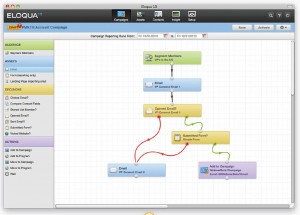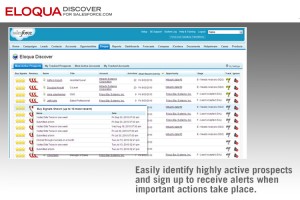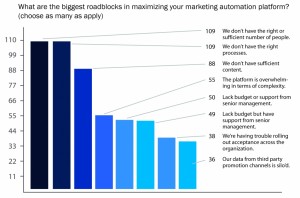Would you like to meet up with fellow Marketing Automation professionals to exchange tips and best practices? Join us at Marketing Automation Monday for an informal panel discussion on using drip marketing to find more qualified leads and for networking with other like-minded marketers. These are the dates & locations:
- San Francisco, November 8th: info & registration »
- Palo Alto, November 15th: info & registration »
The agenda is still being confirmed, but most likely we will start around 5.30pm with drinks and snacks. Around 6pm we’ll start an informal panel discussion about drip marketing in which several people will present their drip campaigns. Questions from the audience are encouraged. And after that we’ll have some more time for networking. Any ideas are welcome.
Future dates will be published on the Marketing Automation Monday web page.
Why Marketing Automation Monday?
The idea for Marketing Automation Monday came up after I had visited several Web Analytics Wednesday events. Sinds 2005, those events have provided a great networking and learning opportunity for Web Analytics professionals. So I thought: “Why not do the same for Marketing Automation professionals?”.
Unfortunately, back then there simply weren’t enough Marketing Automation professionals to meet up with. However, in the past 2 years, Marketing Automation has really taken off. So I think the time is right, and Marketing Automation now deserves its own meetup!
Together with Saad Hameed, I’m initiating these first two events. Since we both live in the Bay Area, that’s a logical place to start. We’ll make it a recurring event if enough people show up. And if you want to organize a Marketing Automation meetup in your city, feel free to do so, and we’ll help you promote it.
The Event
The goal of this event is three-fold: learn more about Marketing Automation, get to know other Marketing Automation professionals, and have fun doing so. We’ll cover topics around Marketing Automation, including:
- Lead Management
- Lead Nurturing
- Revenue Performance Management
- Demand Generation
- B2B Email Marketing
Each meetup has a particular topic (this time it’s drip marketing). The meetups will focus on best practices in Marketing Automation, not so much on implementation details. It is not specific to any Marketing Automation vendor, nor is this event sponsored by any vendors. However, vendors and consultants are welcome to attend, but no selling please.
Join the LinkedIn Group
Saad started the Marketing Automation Association LinkedIn Group a while ago, and all future events will be announced via this Group. So if you want to be kept up to date, please register for this group.
Your Ideas Please
Because this is the first time we organize this event, we’ll need lots of input on the ideal format. We’re curious to hear your input. Feel free to leave a comment or email us (jep at leadsloth dot com)

 Lisa Cramer is president and co-founder of LeadLife Solutions, a provider of on-demand lead management software with embedded best practices that generates, scores, and nurtures leads for B2B marketers. In 2009, Lisa was recognized as one of the top five “Most Influential People” in sales lead management. For more information on lead management or best practices, visit
Lisa Cramer is president and co-founder of LeadLife Solutions, a provider of on-demand lead management software with embedded best practices that generates, scores, and nurtures leads for B2B marketers. In 2009, Lisa was recognized as one of the top five “Most Influential People” in sales lead management. For more information on lead management or best practices, visit  This week I attended the Eloqua Experience, Eloqua’s user conference in San Francisco. The big news of this event is the launch of
This week I attended the Eloqua Experience, Eloqua’s user conference in San Francisco. The big news of this event is the launch of 


 At this week’s
At this week’s